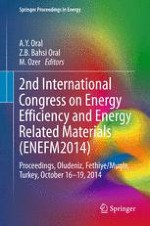2015 | OriginalPaper | Chapter
Influence of the Staphylococcus Aureus Bacteria Cells on the Zeta Potential of Graphene Oxide Modified with Alumina Nanoparticles in Electrolyte and Drinking Water Environment
Authors : A. Jastrzebska, E. Karwowska, A. Olszyna
Published in: 2nd International Congress on Energy Efficiency and Energy Related Materials (ENEFM2014)
Publisher: Springer International Publishing
Activate our intelligent search to find suitable subject content or patents.
Select sections of text to find matching patents with Artificial Intelligence. powered by
Select sections of text to find additional relevant content using AI-assisted search. powered by
